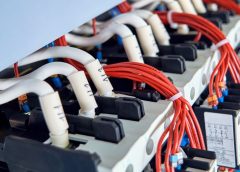If you work in the electrical engineering or wire marking industry, you know the importance of clear and durable markings on wires. Wire marking involves labor-intensive processes prone to errors and inconsistencies, and inkjet printing is a common wire marking method. We’ll explain what you need to know about inkjet printing for wire marking.
Benefits of Inkjet Printing
Inkjet printing is making its mark, quite literally, in the wire marking industry due to its advantages over traditional methods like thermal transfer or hand-written labels.
Precision and Accuracy
Inkjet printing creates detailed, high-resolution prints. This level of precision is critical in applications where tiny wire labels must convey complex information in a small space.
Customization and Flexibility
One of the greatest strengths of inkjet printing is its ability to change from one label design to another without setup adjustments from the operator. This flexibility allows for easy customization, whether you’re marking wires for different projects with multilingual content or meeting industry standards.
Efficiency and Cost-Effectiveness
Inkjet printers are faster and more efficient than traditional printing methods. Reduced labor time and the potential for automation can lead to significant cost savings. Additionally, the per-unit cost of inkjet labels can be lower than other methods, especially in high-volume applications.
Best Practices for Inkjet Printing in Wire Marking
A few best practices can set you up for success and help you get the most out of inkjet printing for wire marking.
Material Selection
The success of inkjet printing on wire marking depends on the materials. The ink must bond with the wire jacket, and the printing must resist environmental factors like heat, moisture, and solvents.
Maintenance Tips for Printers
Regular maintenance of inkjet printers is essential for quality results. This includes keeping printheads clean, using the correct inks, and calibrating the printer for consistent labeling.
Software Considerations
The software you use affects printing efficiency. Look for labeling software that integrates with your existing systems, allowing for easy data input and quick template changes. This software can make the labeling process faster and more reliable.
Plasma Cleaning and Treatment
The surface of the wire material must be clean and free of contaminants so the ink can adhere. Plasma treatment enables inkjet printing on wires by thoroughly cleaning the material. It also improves the adhesion and wettability of the wire’s surface for a strong and clear marking.
Conclusion
That’s practically everything you need to know about inkjet printing for wire marking. Inkjet printing is a modern and efficient approach to wire marking, and many professionals in this industry prefer it. Its precision, flexibility, and cost-effectiveness make it attractive for high-quality, durable wire labels.


